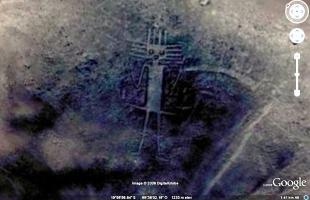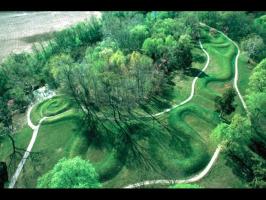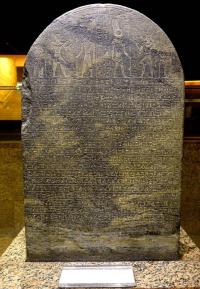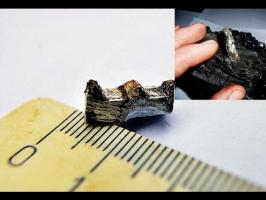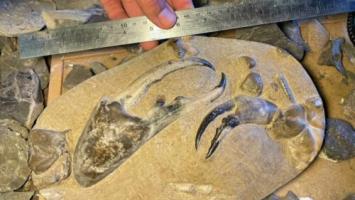Challenging the dating of geologic areas

Extract from C.E.P. N°1
M.C. van Oosterwyck-Gastuche
This article sums up a work started more than 20 years ago. I am a professional mineralogist, specializing in silicates. I worked most of all on African materials in a geology, mineralogy and geochronology research department. At that time, a world renowned geochronologist asked my opinion about "abnormal" age origins that are so frequently found in geochronology studies.
My answer is very simple: since the radioactive elements are locked in well defined crystalline networks, it is logical to think that during the genesis and the alteration of crystals they are influenced by factors such as temperature and solutions (especially, in the case of abnormal ages measured in rocks, the "hydrothermal conditions"). Obviously their chemical composition is important (Gastruche, 1959; Gastruche et De Kimpe, 1959; De Kimpe, Gastuche et Brindley, 1961, etc.) as is their granulometry (Gastruche, 1963 a and b). Since these factors are met in samples giving abnormal ages, I proposed a series of tests. They have never been carried out.
The geochronologists refused by objecting that doing experiments on isotopic techniques was "non scientific," since these always delivered absolute ages. At the same time they evaded all forms of discussion, even those on the absurd results they had put me in charge of going through with a fine-tooth comb. It is true that my conclusion displeased them. You will understand why when reading this article.
Such a reaction stimulated my curiosity. I consulted various specialists: geologists, sedimentologists, embryologists, geneticists, etc., about proof concerning long periods of evolution. To my surprise, I discovered that all of them thought they had been delivered by geochronology. Then I consulted the plentiful documentation at my disposal. After I noted differences of some thousand million years between apparently identical Precambrian formations, I took an interest in "well dated events" which happened on the African continent, related to the "birth of intelligence" among anthropoid and hominid populations during their "emergence process" into the human state. These fossils, several million years old according to the isotopic dating techniques, according to experts, marked the official limit of the Eras and in particular of the Pleistocene for they coincided with the first paleolithic industry appearance.
I came to two important conclusions:
- There is no proof, not even the tiniest, of an animal origin for mankind.
- The isotopic measurements, "dating" geologic eras, have no chronological meaning.
But the conclusions of the manuals are, as we know, diametrically opposed. I started informing myself by asking my fellow geologists. Above all I wanted to know the chronological points of reference which had been used to validate the millions of years of evolution and allowed the selection of geochronological data in order to keep only the good results ("best values"). They confessed they did not know about them but they advised me to consult the Holmes' manual "Physical Geology" (1965), because "everything was in it."
So I started my research with this manual and discovered that dates had been selected according to the Lyell's "actualist" theory. Indeed his "stratigraphical scale" provided "life emergence" with the chronological framework, built during these long periods called geological "Eras" of which the last one, the Pleistocene, coincides with the appearance of our first animal "ancestors," the hominids, who, as we know, made the first cut stones (paleoliths).
It is important to note that, for his actualism, Lyell drew his inspiration from a precise "credo", according to which the biblical stories are only tales, so that strata and fossils could not be the cataclysmic trace of any big flood as had been taught up till then, but reflected long and quiet periods during which species progressively evolved, from Bacteria to Mankind. Consequently the other name of the Lyell's actualism is the uniformitarism or the "tranquil theory". In the name of scientific objectivity Lyell acknowledged he had put aside the diluvianist interpretation, as a subjective religious belief and therefore unrealistic.
Lyell's scale, scientifically proving evolution, was soon taught in all universities. A more careful examination commands the conclusion that it has become obsolete and that observed facts are very much better interpreted in the context of the Biblical story.
Such a statement may seem outrageous. And yet I came to this conclusion after I consulted a considerable number of documents. More advanced research would certainly provide new proofs, but I think it is important here and now to show why principles of geology are out of date. I must confess, most geologists and palaeontologists become hysterical when I present my views. However they have no answer. I will now present the basic principles of evolutionism and show their weakness.
I) The stratigraphical proof
According to Lyell, time is measured by a "stratigraphical scale" - the vertical succession of strata and their thickness reveal that slow deposits occurred on the supposedly uniform crust of the Earth with vertical movements, continents coming from old oceans and vice versa.
But the recent tectonic plate theory has revealed the heterogeneity of the Earth's crust, continents rich in aluminium silicates (Alsi) rigid plates "floating" on pasty layer rich in silicates of magnesium (Masi) (Asthenosphere). The Masi-made and very thin sub-oceanic crust is still now undergoing impressive volcanic phenomena. Therefore the movements of the Earth were lateral ones, since the plates forming the present continents come from the broken up primitive single continent called Old Red Continent by geologists (ORC).
It would have broken into several pieces during a cataclysm which happened some 70 million years ago, according to the best chronologist estimations.
Therefore Lyell's theory is quite obsolete, its two first postulates being invalidated and no objective proof having ever confirmed the "stratigraphical scale" chronology.
On the other hand, recent stratification experiments have demonstrated that the same deposits interpreted by Lyell as a sign of long periods, were formed in a very short time in a cataclysmic environment (cf.: among others Julien, Lan and Berthault, 1993). Consequently, strata and fossils must be interpreted differently.
II) The mineralogical and paleontological proof
This appears to be the most unorthodox. The first criteria to determine the age of a stratum was its degree of crystallisation.
The oldest strata, according to Arduino's classification (1714-1795) was gneiss and crystalline rocks, such as granites, which are impossible to synthesise, which were said to have been formed during a distant "primitive" era called "Archean" or "Precambrian", followed by "Secondary" era, with strong rocks, and "Tertiary" era, with loose rocks, composed of alluvial sediments.
Lyell then took over Arduino's classification by adding an essential chronological point of reference: the "characteristic fossil". Indeed, according to geologists, fossils are "medals" of geology (Moret, 1958). Evolution is not fixed by the stratum but by the degree of the fossil's complexity. So we notice that the scale, based on an obsolete stratification system, is moreover based on an assumption that what has to be proven is true. Lyell initially takes evolution as proven but without any proof.

Indeed, in the "actualist" view, the transformations following Lamarck and Darwin's famous laws, pronounced in a purely naturalist and materialist framework, the first, supposedly "primitive," unicellular organisms (seaweed and bacteria) gave birth through successive affiliations to more "complex" organisms. Here are the elements used to build "Lyell's scale". The "Archean" Era, made up of crystalline rocks, reveal traces of seaweed and bacteria (later, they were called Precambrian Eras, emphasising their extreme complexity). Following this Era, the Palaeozoic or primary Era (of the "Emergence of Fish"), the Mesozoic or Secondary one (of the "Emergence of Reptiles"), lastly the Cainozoic (of the "Emergence of Mammals"), divided into tertiary and quaternary, this last one being characterised by the human "emergence process" from the animal condition.
The significant Greek prefixes: "archeos" (very ancient), "Paleos" (ancient), "mesos" (medium), "kainos" (recent), allied to "zoe" (life), suggest the successive appearance of more and more complex life forms, according to a law known as "conscious complexification".
Let us note that the same framework is found in "the six days work" of the book of Genesis, but in an extremely shortened time frame.
Today the essential "proof" of long lengths of time for evolution is given by geochronology, and you will notice that my remarks came just at the right moment. Today they very officially date the Precambrian Eras from 3000 to 600 million years ago, the Palaeozoic Era from 600 to 225 million years ago, the Mesozoic one from 225 to 70 million years ago, the Cainozoic from 70 million years ago up to our time, with the appearance of our hominid ancestors at the Pleistocene, about 2-3 or 5-6 million years ago. But what proof is there that such transformations took place by affiliation of different species, or that the length of time was extremely long? It has to be acknowledged - none!
Let's start with the transformation of species. Today they are stable and the fossils belong to dead species (some of the best of them such as the coelacanth had been found rather alive, which is embarrassing). But other species related to the disappeared ones are still living and characterize well-defined "ecological niches" (Flori and Rasolofomasoandro, 1974). The species define ecological niches, and not some kind of transformation. The stability of the species being a recognised fact, the "phyletic reconstructions" which are supposed to be the basis of evolution are mind games and are valid only if evolution is proven, as palaeontologists willingly admit. They illustrate evolution, but do not demonstrate it.
In 1957, Bounoure wrote about tertiary mammals (the remark holds for all re-constructions):
"Our mind can establish some comparisons and some ideal classifying links of these animals' limbs: It is even the defining task of comparative anatomy. But we go beyond facts if in most cases we interpret these links as denoting a real affiliation, an effective descendance"
The remark holds for fossil remains ? hominid or other ? that are presented as our "ancestors" (One must note the inverted commas around the word ancestors in evolutionist language, indicating the essentially subjective character of their classification).
Thus, the bountiful documentation on the skulls, the teeth or the limbs of different species of monkeys, horses, and dinosaurs, etc do not state a transition to human brain or hand and palaeontology has never provided objective proof of some progressive evolution. Moreover, in the light of modern genetics and embryology, the Lamarck and Darwinian theories are described as childish and unrealistic today (Chandebois 1989, 1993; Denton, 1989). In particular, Chandebois, an embryologist, thinks that changes took place inside the embryo through simple but orientated physicochemical mechanisms, and might occur in very short times. This presupposes the intervention of an Intelligence acting inside the embryo, before the animal's birth; which excludes the laws of "use and no use" and "natural selection".
Let us note again that Darwin founded his "natural selection" theory by supposing the existence of the necessary long length of time for the evolution of species; which he explained as minor modifications, such as those created by English breeders in horses and dogs, but carried on during immense time spans, basing himself on Lyell's actualism. In the preface of "The Origin of Species" he wrote,
"The person who reads Charles Lyell's grandiose work "Principles of Geology", in which future historians will recognize that it created a revolution in natural sciences (he was not mistaken), and does not admit that the past periods were very long, can close my book immediately"
If the specialities were not compartmentalised, scientists would have long abandoned Darwin's thesis, as we will see and as many willingly recognise in specialised publications.
III) The geochronological proof
This last one remains, shown today as the true proof of evolution, dating appearing species at millions or even thousands of million years. Here again, a careful examination reveals its illusory character. The geological time measured by the decay of a radioactive isotope was essentially the work of Arthur Holmes (1890-1963), who shared Lyell's "creed". In fact, he confirmed Lyell's thesis by giving the oldest ages (from 3000 to 600 millions of years) to Archean or Precambrian formations, where elaborate life signs had not yet been discovered. Moreover, his "Phanerozoic time scale", from 600 million years ago to our era, confirmed evolution observed in Lyell's stratigraphical scale, proving the "emergence of life" and officially dating the main recorded "events" within the geological eras.
In spite of his apparently convincing palaeontological documentation and his impressive mathematical formality, Holmes' geological scale appears to be very confused. The dates of his "Phanerozoic scale" are among the most doubtful, as was noticed on several occasions, the first of which during a meeting which took place the very year of his death. They reproached him at that time for leaning on a too limited number of mostly questionable data (Harland, Smith and Wilcook ed., 1964). Later, York and Farquhar (1972), disconcerted by the profusion of abnormal ages and asking for more data, ironically wrote about Holmes' scale,
"These two necessary presuppositions, precise stratigraphical localisation and reliable radiometric dating, seem to exclude one another: we almost end up at a geological uncertainty principle"
The worrying point is the following: these isotopic determinations which provide the millions of years which are so well received, (and so controversial for specialists) which proved "the Emergence of Life," were never applied to any fossil or to any strata in which these fossils are buried; sedimentary rocks not lending themselves to radio-dating. The material dated is generally a lava flow covering these fossiliferous layers, the lava flow supposedly intimately linked to the evolution process as designed in the "actualist" framework which inspired Holmes' scale, all without a shadow of proof.
Another disconcerting fact: the "correct" ages which appear are the result of a selection (Holmes, 1965), the author having only accepted the "best values" (those confirming Lyell's stratigraphical scale), rejecting the others as "anomalous".
The hypothetical character of such a construction, valid if Lyell's theory is exact, is underlined by geochronologists themselves, beginning with the authors of the Potassium-Argon dating method, Dalrymple and Lanphere (1979). Fitch, Hooker and Miller (1978), confronted by field problems, debated in "Geological Background to Fossil Man" on the capacity of radioactive decay techniques to provide real ages for principal "events" of the African Oriental Rift (East Rift Valley) linked to the "emergence process." They note that the phenomenon of radioactive decay gives dates for "events" taking place in the rocks but on the basis of temperature changes and/or of the arrival of solutions. They emphasize,
"It is important to realise that exactitude of ages obtained from this means depends on the integrity and condition of preservation of isotopic recording of rocks (since they change with the above factors and with the alteration of mineral constituents) and it also depends on our interpretation of radio-isotopic experiments."
This is essentially based "on our interpretation of data related to fossil fauna" (what is unsaid is that the interpretation is by proponents of the the actualist and Evolution theory framework), since "combination of stratigraphy of rocks and stratigraphical palaeontology gives us the geological time scale."
Unfortunately, they note that the results obtained in the Oriental Rift, far from confirming the actualist hypothesis, remain particularly strange. Furthermore, these authors conclude:
"The two principal tools of geochronology being equally fallible, the best is to use them jointly and not to oppose them"
Therefore the principle tool is not geochronology, but Lyell's scale, and the sledgehammer argument, which seems to lack any sense, remains the "characteristic fossil," the isotopic results being filtered according to its theoretical age.
Table 1 produces some of the results obtained by Bishop and al (1969) with Potassium-Argon (*1) techniques in the hope of determining the official "events" in relation to the "rise of hominids" (*2) of the Miocene. A measurement of 14-15 million years ago is held for the dating of the Proconsul, an important "hominid" ancestor (*3), whereas ages measured at 42 and 264 million years ago were dismissed as "abnormal". Indeed the first date becomes integrated into Holmes' "Phanerozoic scale", whereas the others are too old. The date of 42 million years ago was attributed to the granulometry influence, which was brought up several times in mineralogy (see for example Gastruche, 1963 a and b), the date of 264 million years ago, to "the influence of older solutions" coming from Precambrian block ("Basement complex") with its radiometric "ages" higher than 600 million years ago.
(1*) At that time, they were supposedly more reliable than the Uranium-Lead and Rubidium-Strontium ones, the results of which showed the influence of solutions. At that time it was thought not to be the case for Potassium-Argon technique, but that was a mistake.
(2*) Hominoids are great apes the fossil remains of which have been discovered in abundance in the area around Victoria Lake. They are obviously the "ancestors" of hominids, and so are our distant "ancestors," of course !
Table 1: Some K/Ar apparent ages obtained on materials classified Miocene with mammals' fossils, near Victoria Lake.(W. W. Bishop, H.A. Miller, F.J. Fitch. 1969)
| Place | Sample | Description | Age (millions years) | Author |
| Rusinga Island | lR.107 site | Kihara series material (located under the Proconsul stratum) | 14.6 + 1.4 | Everden and al. (1964) |
| KA 336 | Idem. Coarse biotite from volcanic origin | 15.2 + 1.5 | Everden and Curtis (1965) | |
| KA 800 | Idem. Same biotite, fine. | 42.0 | Everden and Curtis (1965) | |
| Koru | WW 24/2 | Mica of a tertiary tuff. | 258 + 13 | Curtis (not published) |
| 264 + 8 | Bishop e al.(1969) | |||
| Egon volcano | KA 1775 | Nepheline lava Theoretically older lower flow . | 17.2 + 4 | Bishop and al. (1969) |
| Idem. Theoretically younger upper layer. | 19.8 + 1.7 | Bishop and al. (1969) | ||
| Volcán Napak | WW 1/11 | Site 1 coarse tuff | 25.8 + 1.8 | Everden and Curtis (1965) |
| WW _ | Site 1, biotite of the same tuff. | 19.2 | Everden and al. (1964) | |
| MB 23 | Site 1, black nepheline lava, other place. | 12.8 + 0.5 7.5 + 0.5 | Bishop and al. (1969) | |
| Sun 1 | Nepheline lava, other place. | 14.3 + 0.7 6.9 + 0.5 | Bishop and al. (1969) | |
| Sun 3 | Nepheline lava, other volcano slope. | 27.5 + 2.6 18.7 + 2.0 | Bishop and al. (1969 |
(3*) The Proconsul had aroused big hopes. Its "ancestor" status was underlined by Ruby Zalinger in UNESCO Mail (Le Courrier de l'Unesco, 1972) who drew it standing, one stone in each hand! Steve Parker in "The Dawn of Humanity" (1992) still considers it favourably due to its sinus width.
Table 2 is also interesting because it shows some results obtained by Fitch and Miller (1976) on a universally known volcanic tuff, the K.B.S., of Koobi-Fora, which raised an infinite number of questions.
One of them was the reliability of the Pleistocene date, officially established thanks to another famous discovery, carried out by Dr Louis Bassett Leakey, at Olduvai gorge, in Kenya: Australopithecus remains associated with coarse stone artifacts, the "chopper tools" ? which the Australopithecus certainly sculpted 1.75 million years ago ? a "proven" fact by one of the very first K/Ar dating procedures of the lava covering the famous "Bed I" (Leakey, Everden and Curtis, 1961). Holmes (1965), filled with enthusiasm about Leakey's discovery, officially proclaimed that it determined the date of the "Olduvai event" when the ape became man. It engaged the hominisation process beginning with the cutting of stones. Consequently, the Pleistocene date was established in a "strictly scientific" way (*4)"
Table 2: Some K/Ar apparent ages on the K.B.S. tuff.
(F.J. Fitch and J.A. Miller, in "Earliest Man and environment in the lake Rudolf basin", 1976)
| Reference sample | Granulometrical fraction | Age with error range (millions of years) |
| Leakey I (A) (tuff of vitreous crystal) | 30 - 50 mesh | 221 + 7 |
| Leakey I (B1) Pumice stone | 30 - 50 mesh | 3.02 + 1.6 |
| Leakey I (B2) Sanidine extracted from the pumice stone | 30 - 50 mesh | 2.37 + 0.5 |
| FM 7050 Pumice stone gravel | 30 mesh | 8.43 + 0.51 |
| Crushed and decalcified sanidine extracted from pumice stone | 30 - 70 mesh | 17.5 + 0.9 |
(4*) The very talented Australopithecus was the "robustus". Later at Olduvai, the "gracilis" (more graceful) was discovered, which looked like the afarensis (Lucy), but which could be the robustus' female, the species having, as it appears later, an important sexual dimorphism.

Unfortunately, K/Ar ages obtained elsewhere on the same material prove to be unorthodox. The biggest disappointment came from Koobi-Fora discoveries (near the Rudolf or Turkana lake), where similar fossils associated with the same "chopper tools" were officially dated on the K.B.S. tuff with an older date: 2.42 millions of years. Even older dates reaching 221 millions of years were also obtained on the same tuff, but could not decently be inserted in Holmes' scale (see figure 2). Let us note again the granulometry influence on the "apparent" K/Ar age. "Apparent" is the word employed by geologists themselves in order to describe strange ages, which are distant from the expected age of the fossil and which will disappear from official publications. On the FM 7050 sample, the sanidine fraction calibrated from 30 to 70 mesh and decalcified became 9 million years older than the same initial material just sieved at 30 mesh. Terrifying! And other data, coming from as precise studies as these ones are even worse, as we will further see.
Worst of all, the K.B.S. tuff contained human remains: a child's skull: "Skull 1470". It had been discovered by Dr Leakey's son, Richard, who commented on his discovery in this way: "Either this skull is chucked out, or our primitive man theories are chucked out" (R. Leakey, 1973). His father died in 1972, the year before.
It became clear that neither the palaeontological tool nor the geological tool was able to give a reliable date. Furthermore, the strange "cyclic" sedimentation observed there, where the same remains of the same fossils rolled and carried by flows were interspersed with volcanic ash beds, could not be interpreted by Lyell's "tranquil theory". It visibly reflected the trace of cataclysmic events. Specialists end up acknowledging it, with regret, but with very technical and incomprehensible terms for the simple man in the street.

Scientists' reaction to the "Skull 1470" was simple: they chucked out the skull and kept their theories. Belonging to a little girl, with evidently a low cranial capacity (800cc), it was attributed to the Homo Erectus. The other human remains discovered in the oriental area of the Rift, mixed with a surprising mass of animal bones, were overshadowed in the same way or quoted in an incomprehensible way by Coppens, in particular, who acknowledges the "coexistence of Australopithecus named robust (*5) and an unquestionable man.
Everybody knows this fact (really?) They live in the same country, in different ecological niches. Two hominid types (only) coexisted during some era of humanity. And it is not an affair of 2 or 300 years but 1 million years. Both are found in the same finds, at the same levels. On this point, the consensus is complete (Coppens, 1991).
Having been invited to conclude the symposium dedicated to "Primitive man", published in collaboration with this same Coppens (Coppens and al., 1976), Howell and Isaac acknowledged that Leakey's discovery "had raised an unexpected number of problems". But as Humanity's evolution is simply a "question of behaviour", as "the fossil evidence had clearly showed the existence of the two-footed primates in the 2 to 3 million year bracket (*6), "all of them were hominids", QED.
A mystery remained: Who had sculpted the "choppers"? The conference raised these questions partly as a joke - according to the same authors - because there is no objective answer. Most of the sites where hominids were discovered do not have manufactured objects and most of the archaeological sites do not have traces of hominids...
Consequently, our answer to these questions remains widely subjective and speculative: It is easily guessed that We are far from the scientific objectivity which these researchers claim.
But the answer from geochronologists on the reliability of their dates was also subjective and speculative, all based on Lyell's and Holmes' scales, themselves built on subjective conceptions. Must natural history proceed from subjective speculations all based not on science but on a single firm "belief", Lyell's: "To be done with Moses"? Whenever confronted with sets of restricting facts which invalidate the "tranquil theory" which serve as a backdrop for the Evolution of the living, palaeontologists and sedimentologists desperately cling to geochronologists' data, whom they think brought the unquestionable proof of the reality of very slow phenomena described by Lamarck and Darwin. We will see how they fed themselves on illusions.
(5*) The "Skull 1470" is supposedly an erectus and Lucy an Australopithecus afarensis!
(6*) Can Australopithecus stand? The question was discussed endlessly without being settled, until we noticed that they were - as other monkeys - humble quadrumana (cf. Johanson, 1996). The human remains and the other obviously abnormal dates had been passed over in silence...









